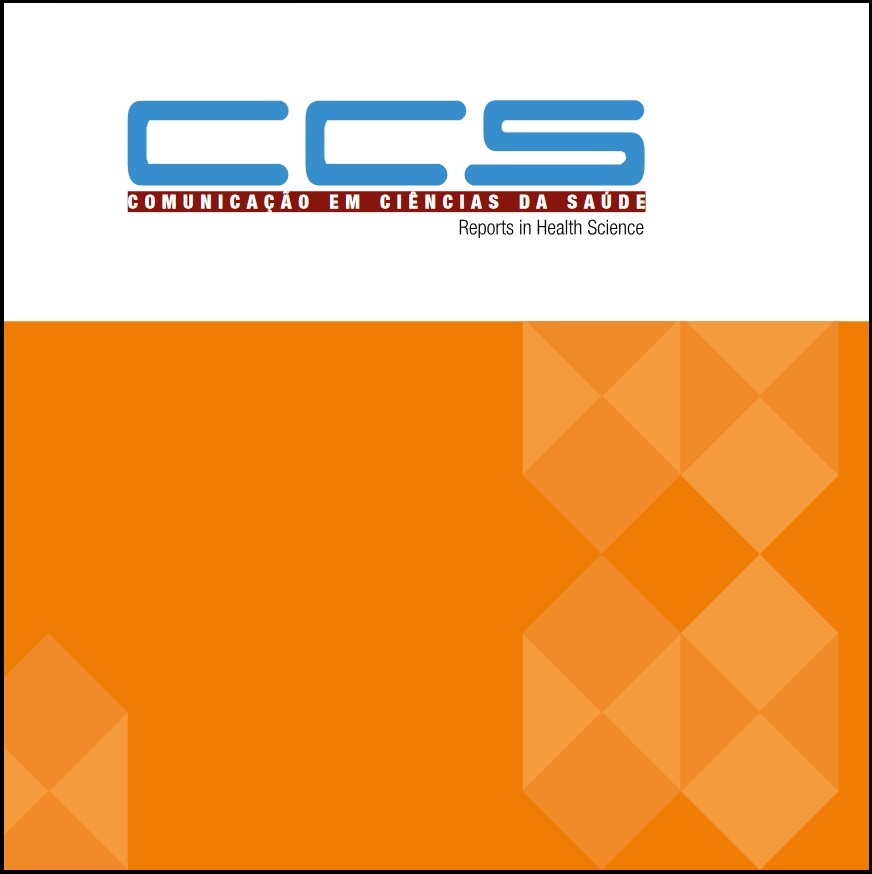Is the degree of obesity associated with the level of physical activity?
DOI:
https://doi.org/10.51723/ccs.v32iSuppl1.988Keywords:
Noncommunicable Diseases, Obesity, Body Mass Index, Physical Exertion, ExerciseAbstract
Introduction: Obesity and physical inactivity are more prevalent among women. Evidences have suggested that the severity of obesity might be associated with the lifestyle. Objectives: To compare the level of physical activity between women in grade 2 and grade 3 obesity. Methods: We assessed 29 women (47 ± 10 years; 109 ± 16 kg; 1.60 ± 0.06 m) in grade 2 (n = 8) and grade 3 (n = 21) obesity, who were admitted to a public health service reference in obesity treatment. The level of physical activity was estimated using the Global Physical Activity Questionnaire. Results: Woman in grade 2 obesity reported longer periods in moderate intensity activities than grade 3 (1338 ± 921 cf. 501 ± 473 min·wk-1, p < 0.001), while no differences were observed for vigorous intensity activities (p = 0.29) and total time of moderate to vigorous activities (p = 0.06). Considering the questionnaire domains, woman in grade 2 obesity reported longer periods in recreational activities than grade 3 (411 ± 410 cf. 156 ± 189 min·wk-1, p = 0.01), but no differences were observed in occupational activities (p = 0.13), active transportation (p = 0.49) and sedentary behavior (p = 0.20). Conclusion: Woman in grade 2 were more physically active than grade 3.
Downloads
References
National Heart et al. Clinical guidelines on the identification, evaluation, and treatment of overweight and obesity in adults: the evidence report. n° 98. U.S.: National Heart, Lung, and Blood Institute, 1998.
GBD 2015 Obesity Collaborators. Health effects of overweight and obesity in 195 countries over 25 years. NEJM, 2017Jul 6, 377 (1), 13-27. Available from: https://dx.doi.org/10.1056/NEJMoa1614362
Donnelly JE, Blair SN, Jakicic JM, Manore MM, Rankin JW, Smith, BK. Appropriate physical activity intervention strategies for weight loss and prevention of weight regain for adults. Med Sci Sports Exerc. 2009 Feb, 41(2):459-471. Available from: https://dx.doi.org/10.1249/MSS.0b013e3181949333
Yanovski SZ, Yanovski JA. Toward precision approaches for the prevention and treatment of obesity. JAMA. 2018 Jan, 319(3): 223-224. Available from:
https://dx.doi.org/10.1001%2Fjama.2017.20051
Lee I-Min, Shiroma, EJ., Lobelo, F., Puska P, Blair SN, Katzmarzyk PT. Effect of physical inactivity on major non-communicable diseases worldwide:
an analysis of burden of disease and life expectancy. Lancet. 2012 Jul 21; 380(9838): 219-229. Available from: https://dx.doi.org/10.1016%2FS0140-6736(12)61031-9
Bull FC, Al-Ansari SS, Biddle S. World Health Organization 2020 guidelines on physical activity and sedentary behaviour. Br J Sports Med 2020; 54: 1451-1462. Available from: http://dx.doi.org/10.1136/bjsports-2020-102955
U.S. Department of Health and Human Services. Physical Activity Guidelines for Americans, 2nd edition. Washington, DC: U.S. Department of Health and Human Services; 2018. Available from: https://
health.gov/sites/default/files/2019-09/Physical_Activity_Guidelines_2nd_edition.pdf
BRASIL. Ministério da Saúde. Vigitel Brasil 2018: vigilância de fatores de risco e proteção para doenças crônicas por inquérito telefônico. Brasília: Ministério
da Saúde, 2019. Disponível em: https://portalarquivos2.
saude.gov.br/images/pdf/2019/julho/25/vigitel-brasil-2018.pdf
BRASIL. Ministério da Saúde. Conselho Nacional de Saúde. Resolução n. 466, de 12 de dezembro de 2012. Aprova diretrizes e normas regulamentadoras de
pesquisas envolvendo seres humanos. Brasília, Diário Oficial da União, 12 dez, 2012. Disponível em: http://conselho.saude.gov.br/resolucoes/2012/Reso466.pdf
Armstrong T, Bull F. Development of the World Health Organization Global Physical Activity Questionnaire (GPAQ). J of Public Health. 2006, 14(2):66-70. Available from: http://dx.doi.org/10.1007/
s10389-006-0024-x
Gondoni LA, Nibbio F, Caetani G, Augello G, Titon AM. What are we measuring? Considerations on subjective ratings of perceived exertion in obese patients for exercise prescription in cardiac rehabilitation programs. Int J Cardiol. 2010 Apr 15, 140(2):236-238. Available from: http://dx.doi.org/10.1016/j.ijcard.2008.11.068
Madalozzo R, Martins SR, Shiratori L. Participação no mercado de trabalho e no trabalho doméstico: homens e mulheres têm condições iguais? Rev Estud Fem. 2010 Ago, 18(2): 547-566. Disponível em: https://doi.org/10.1590/S0104-026X2010000200015
Cerin E, Leslie E, Sugiyama T, Owen N. Perceived barriers to leisure-time physical activity in adults: an ecological perspective. J Phys Act Health. 2010
Jul, 7(4): 451-459. Disponível em: https://doi.org/10.1123/jpah.7.4.451
Sallis JF, Saelens BE. Assessment of physical activity by self-report: status, limitations, and future directions. RQES. 2000, 71(sup2): 1-14. Available from:
https://doi.org/10.1080/02701367.2000.11082780
Ahmad MH, Salleh R, Nor MNS, Baharuddin A, Hasani WSR, Omar A et al. Comparison between self-reported physical activity (IPAQ-SF) and pedometer
among overweight and obese women in
the MyBFF@ home study. BMC women’s health. 2018, 18(Suppl 1): 100. Available from: https://doi.org/10.1186/s12905-018-0599-8
Yi LY, Samat N, Muda, WMW. Accelerometer-Measured Physical Activity and its Relationship with Body Mass Index (BMI) and Waist Circumference (WC) Measurements: A Cross-Sectional Study on Malaysian Adults. Mal J Nutr. 2017, 23(3): 397-408. Available from: https://nutriweb.org.my/mjn/publication/23-3/i.pdf
Brown BB, Werner CM. Using accelerometer feedback to identify walking destinations, activity overestimates, and stealth exercise in obese and nonobese individuals. J Phys Act Health. 2008, 5(6): 882-893. Available from: https://doi.org/10.1123/jpah.5.6.882
Downloads
Published
How to Cite
Issue
Section
License
Declaro para os devidos fins que o artigo que estou submetendo representa um trabalho original e nunca foi publicado total ou parcialmente, e que se alguma de suas partes foi publicada possuímos autorização expressa para a publicação no periódico Comunicação em Ciências da Saúde (CCS). Esse artigo não foi enviado a outro periódico e não o será enquanto estiver sendo considerada sua publicação; caso venha a ser aceito não será publicado em outro periódico; e não contém material difamatório ou ilegal sob nenhuma forma, não viola a intimidade de terceiros, nem infringe direitos protegidos.
Eu e demais autores desse trabalho certificamos por meio desta declaração que:
- Concordamos com as normas editoriais e com o processo de revisão da CCS;
- Aceitamos a responsabilidade pela conduta desse estudo e pela análise e interpretação dos dados;
- Cooperaremos, sempre que solicitado, na obtenção e fornecimento de dados sobre os quais o manuscrito está baseado, para exame dos avaliadores;
- Não estão sendo omitidos quaisquer ligações ou acordos de financiamento entre os autores e companhias ou pessoas que possam ter interesse no material abordado no artigo;
- Não estão sendo excluídos ou omitidos deste artigo autores ou instituições participantes;
- Possuímos permissão para uso de figuras e tabelas publicadas em outras fontes;
- Possuímos permissão das pessoas e instituições citadas nos agradecimentos;
- O autor correspondente autoriza a publicação do endereço informado e e-mail do(s) autor(es) junto com o artigo;
- Assumimos a responsabilidade pela entrega de documentos verídicos;
- Autorizamos a publicação do referido artigo no periódico Comunicação em Ciências da Saúde, segundo critérios próprios e em número e volume a serem definidos pelo editor do periódico;
- Nos comprometemos a atender os prazos estipulados pelos editores do periódico Comunicação em Ciências da saúde;
- Estamos cientes de que a não manifestação no prazo de dois dias da revisão da diagramação, recebida por e-mail, será considerado aprovado para publicação.








